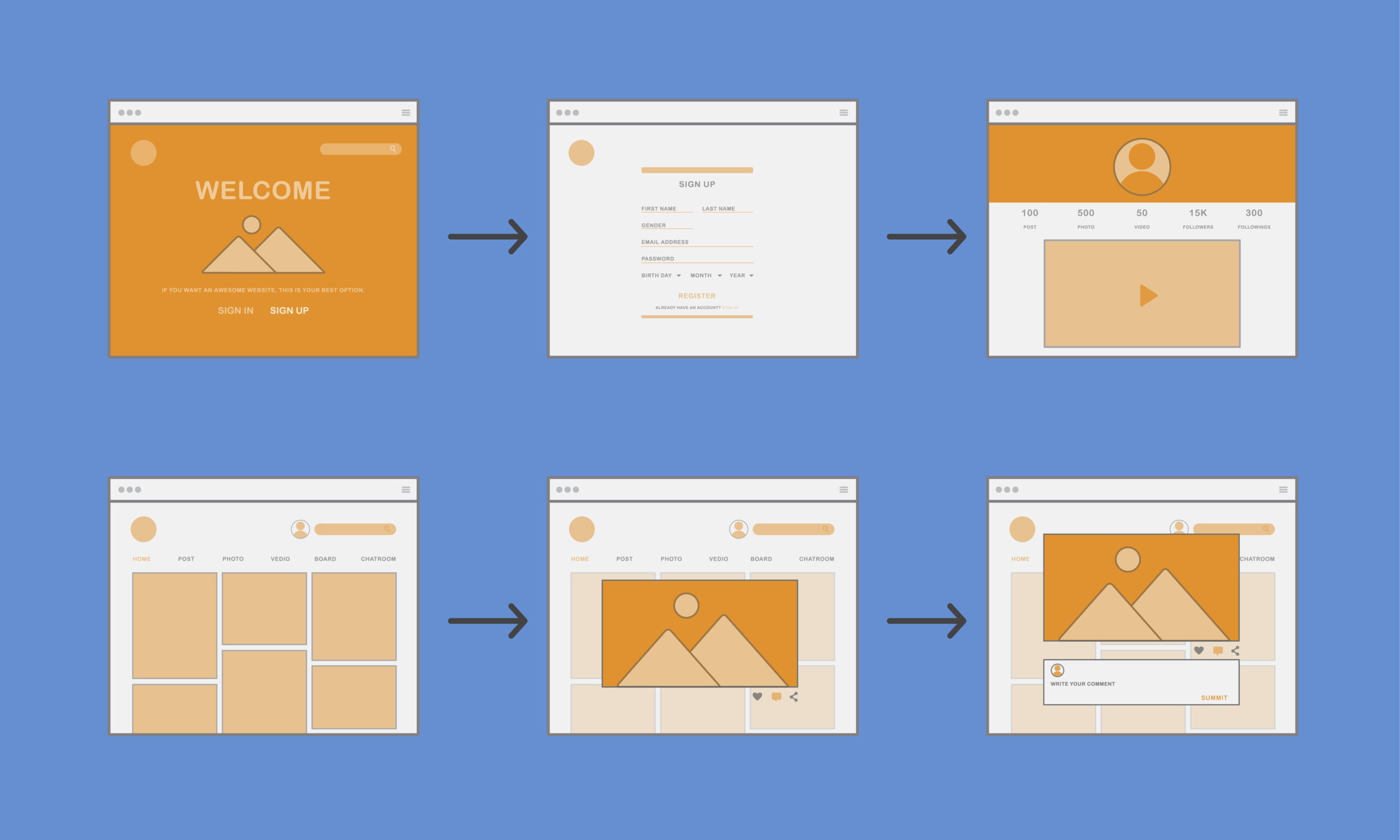Breadcrumbs Aren’t a Ranking Factor Here’s Why Google say's So!

If you’re like most SEOs or content creators, you’ve probably added breadcrumb navigation to your site thinking it gives you a ranking edge. After all, it looks clean, appears in Google’s search snippets, and tools like Yoast keep nudging you to enable it.
So, it must help with SEO. Right?
Well, not in the way you might think.
Google has gone on record: Breadcrumbs don’t directly affect your rankings. That means all the time spent tweaking them for a supposed ranking lift? It might be better spent elsewhere.
But don’t write them off just yet.
Despite the myth, breadcrumbs still play a valuable role in how users (and search engines) navigate your site. So the question isn’t “Do they rank?” it’s “Why do smart SEOs still use them anyway?”
Let’s unpack what breadcrumbs actually do for your site and what they don’t.
The Breadcrumb Illusion: Are You Chasing the Wrong SEO Wins?
There’s a persistent belief floating around SEO forums and plugin dashboards that add breadcrumbs and you’ll climb the rankings.
Tools like Yoast, Rank Math, and All in One SEO highlight breadcrumb navigation like it’s some kind of ranking cheat code. Their interfaces make it feel like an essential on-page signal. And to be fair breadcrumbs do show up in Google’s search snippets.
But here’s the problem, breadcrumbs aren’t a direct ranking factor. Google’s been clear about that.
And yet, SEOs spend hours tweaking paths, adjusting plugin settings, and restructuring internal links all hoping it’ll boost visibility. When rankings don’t budge, the frustration sets in.
You followed “best practices.” You optimized every breadcrumb trail. But you’re still slipping in the SERPs.
Sound familiar?
This is the trap of optimizing for the appearance of SEO progress while ignoring what actually moves the needle.
So the question is: if breadcrumbs don’t help you rank higher, why are they still worth including?
Let’s dig deeper.
What Google Actually Says About Breadcrumbs
Let’s cut through the noise.
Google has never claimed that breadcrumbs are a direct ranking signal. In fact, Google’s official documentation states that breadcrumb markup helps Google understand a page’s context within a site but it doesn’t influence rank.
John Mueller, Google Search Advocate, reinforced this during a Webmaster Hangout:
So, what do breadcrumbs really do?
They improve how your pages appear in search results (via rich snippets).
They enhance internal linking and site hierarchy visibility, helping both users and crawlers.
But let’s be clear, just because breadcrumbs show up in SERPs doesn’t mean they’re pushing you up the rankings. They’re about usability and clarity not algorithmic advantage.
If you’re expecting breadcrumb markup alone to bump your pages higher, you’re focusing on structure over substance. The next section breaks down where breadcrumbs do matter, and how to actually use them to your benefit.
So Why Use Breadcrumbs at All?
If breadcrumbs don’t directly boost rankings, why do SEO professionals still recommend them?
Simple, they improve the user experience which indirectly supports SEO.
Breadcrumbs offer an intuitive way for visitors to retrace their steps or jump to higher-level pages without digging through menus. On large websites think e-commerce stores or multi-category blogs this kind of navigational clarity can reduce bounce rates and increase time on site.
From a technical standpoint, breadcrumb markup (structured data) gives Google a cleaner map of your site’s hierarchy. This doesn’t mean “better rankings,” but it can help with smarter crawling and indexing. Google’s bots understand how your pages relate, making it easier to serve the right content to the right searcher.
And here’s the real kicker Google values websites that users find helpful.
That means a seamless, well-structured site can indirectly contribute to your SEO success. Breadcrumbs play a quiet but useful role in that equation not as ranking fuel, but as a compass for both users and search engines.
So no, they won’t shoot you to page one but they do help keep your site navigable, understandable and trusted.
Practical Benefits You Should Care About
If breadcrumbs don’t influence rankings directly, what purpose do they serve?
Quite a few actually and they matter more than most realize.
For your visitors, breadcrumbs act like a built-in roadmap. They make it easy to move between related pages or step back to broader sections, especially helpful in blogs or online stores with multiple layers. This smooth navigation encourages users to explore rather than exit.
On search engines, properly marked-up breadcrumbs may appear in your results. These cleaner, structured listings can improve how your page is presented and often lead to better click-through rates.
From a technical angle, breadcrumbs contribute to internal linking. They guide Googlebot through your site, helping it understand the structure and discover deeper pages. This supports better crawl coverage and distributes link value more evenly.
Metrics also reflect the difference. Sites with thoughtful breadcrumb usage often see longer session durations and more pages visited per user clear signs of better engagement.
So while breadcrumbs won’t lift you in rankings on their own, they contribute to the kind of experience Google rewards over time.
How to Implement Breadcrumbs the Right Way
Breadcrumbs are only as effective as their execution and the good news is setup doesn’t have to be complex.
If you’re using WordPress plugins like Yoast SEO or Rank Math offer built-in breadcrumb features. You can activate them with a few clicks and customize the label style or position as needed.
For custom HTML sites add Schema.org markup using either JSON-LD or Microdata format. This helps search engines display breadcrumbs properly in search results.
To make them count:
- Keep labels short, descriptive, and user-focused
- Maintain logical flow (e.g., Home > Blog > SEO > What Are Breadcrumbs?)
- Optimize for mobile users with responsive breadcrumb designs
Once implemented, run your pages through Google’s Rich Results Test. This ensures your markup is valid and your breadcrumbs are eligible for enhanced listings.
Tracking improvements? Watch for increased click-through rates, better dwell time, and deeper engagement in analytics. That’s where breadcrumb usefulness truly shows up.
Frequently Asked Questions About Breadcrumbs in SEO
Do breadcrumbs increase rankings?
Not directly. Google has clarified that breadcrumbs are not a ranking factor. They don’t boost your page’s position in the search results on their own.
What does Google actually say about them?
Google recommends breadcrumbs to improve site structure and user experience. According to Search Central and spokespeople like John Mueller, breadcrumbs help Google understand page hierarchy but don’t influence rankings.
Should I still implement them?
Yes, especially for usability. Breadcrumbs make site navigation easier, enhance user flow, and can result in better engagement metrics, which do matter for SEO indirectly.
Are breadcrumbs helpful for e-commerce sites?
Absolutely. Large product catalogs benefit from breadcrumbs, especially when users browse nested categories. It helps customers backtrack without restarting their journey.
Do breadcrumbs work on mobile devices?
They do, and they should. Responsive breadcrumb navigation improves usability for mobile users something Google values highly in its mobile-first indexing approach.
What kind of markup should I use?
Use Schema.org’s BreadcrumbList markup either in JSON-LD (preferred by Google) or Microdata format. Plugins like Yoast or Rank Math can handle this if you’re on WordPress.
Can breadcrumbs affect click-through rates (CTR)?
Yes, they can. Breadcrumbs in SERPs provide cleaner, more informative listings, which may encourage users to click especially when URLs are long or unclear.
Can removing breadcrumbs hurt my SEO?
If your users rely on them, removing breadcrumbs could increase bounce rates or reduce navigation clarity. While rankings may not drop directly, the ripple effects could still hurt overall performance.
Actionable Takeaways & SEO Strategy Shift
Breadcrumbs won’t catapult your rankings but that’s not the point. Their real value lies in creating a clearer path for both users and search engines. From cleaner navigation to improved crawlability, they serve as subtle infrastructure that supports a better web experience.
If you’re still approaching SEO as a checklist, it’s time to shift. Focus less on “checkbox SEO” and more on user-first design. Breadcrumbs are part of that broader picture.
Audit your site not just for missing tags or keywords, but for structure and flow. Ask: Can a user easily trace their journey? Can a bot? If the answer is no, breadcrumbs might be the simplest fix with the biggest indirect payoff.
Don’t treat breadcrumbs as an optional extra. Treat them as a quiet upgrade to both your UX and SEO foundation.
